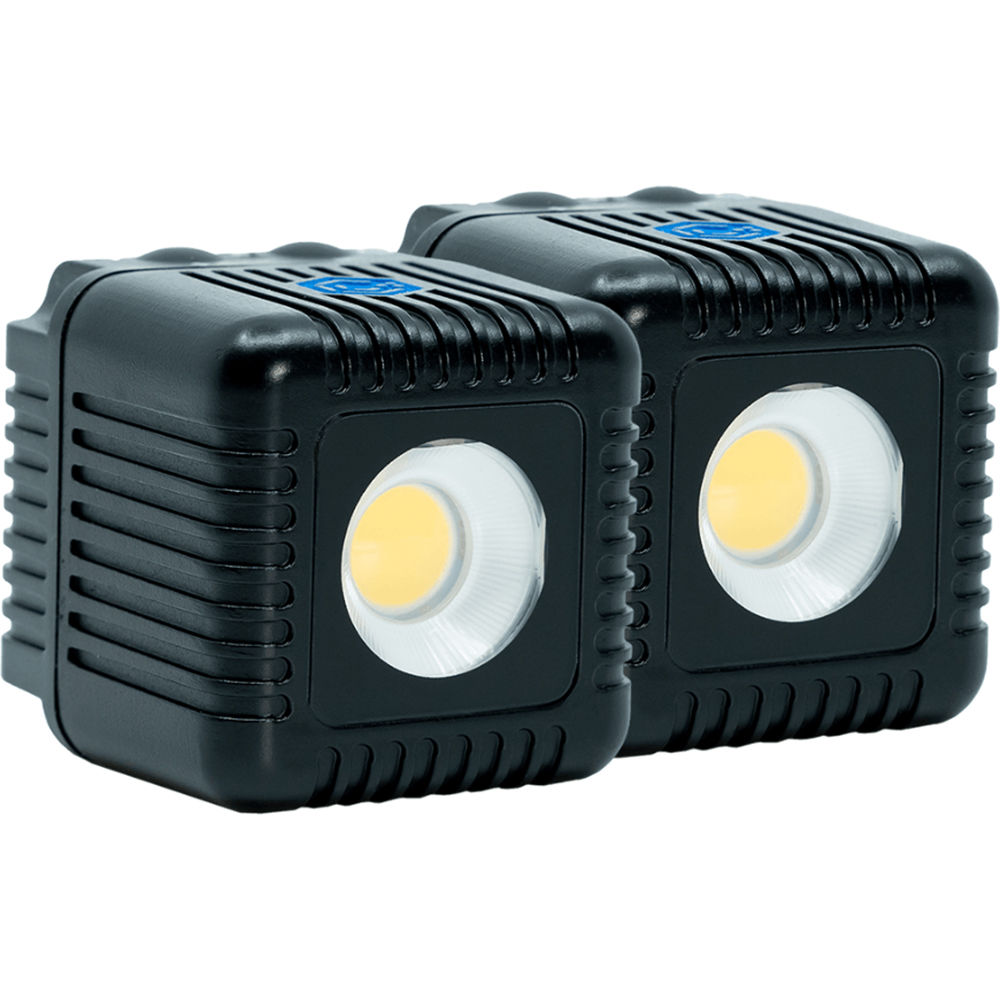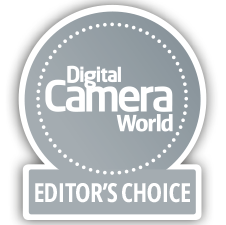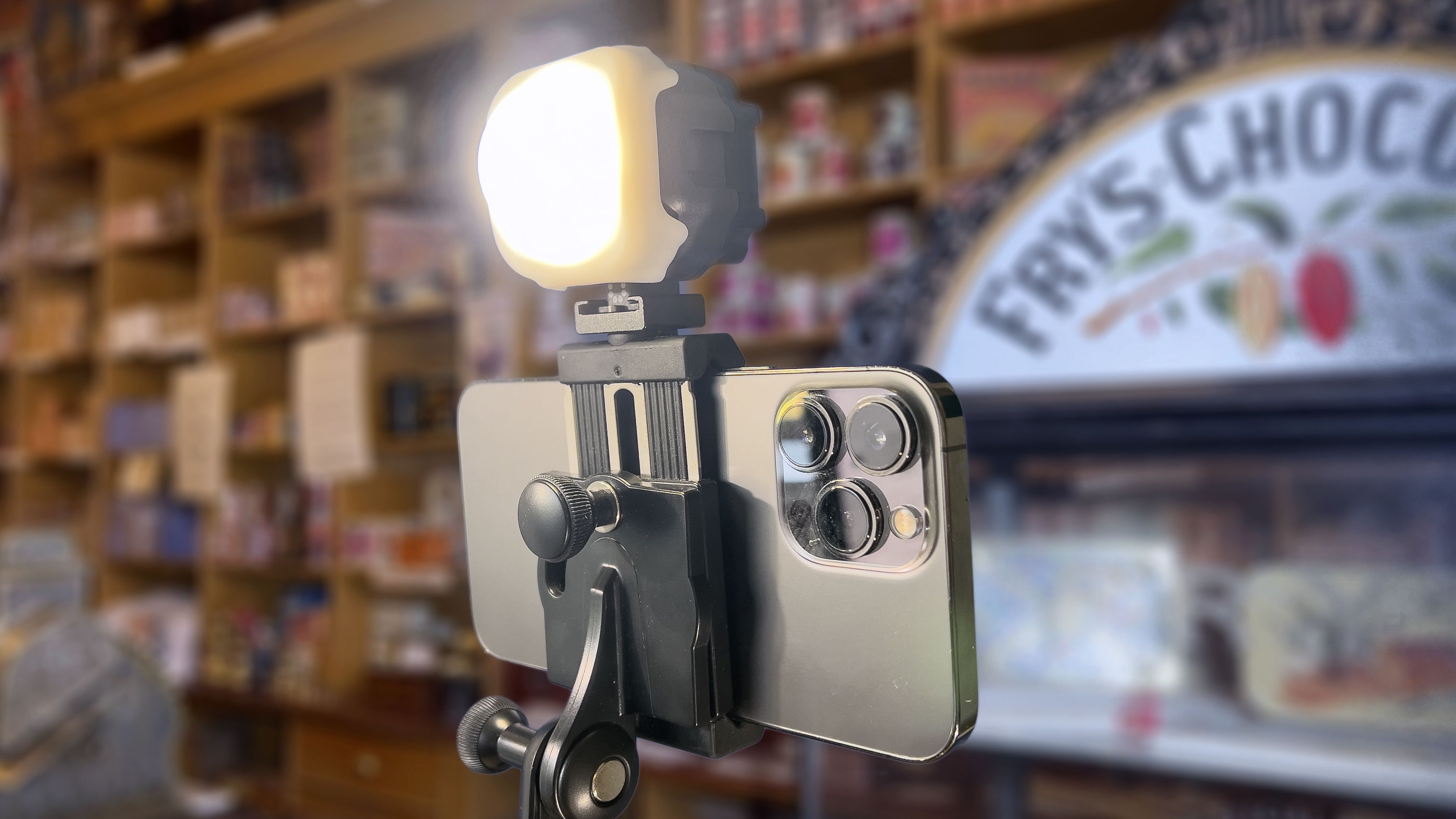The best LED light panels: portable lighting for photography and video
We've listed the best LED light panels for any size or budget, for smartphones, hotshoe mounting and studio photography

- The quick list
- Best hotshoe LED panel
- Best NEO 3 alternative
- Best portable video light
- Best smartphone light
- Best smartphone panel
- Best simple panel
- Best miniature light
- Best studio panel
- Best light stick
- Best for professionals
- Best portable studio light
- Best for filmmakers
- How to choose
- How we test
The best LED light panels are some of the most versatile lighting tools for photographers and videographers alike. While they are more commonly associated with video, an LED panel sending out a continuous stream of smooth, even light can be hugely useful for practically any type of shoot, whether you're using a smartphone, a mirrorless camera or a professional cinema camera.
This guide represents a rundown of the best LED lights we've tested, from pocketable options to heavy-duty cinematography lights. If you're not sure which is right for you, scroll to the bottom of the page where we've put together some information on how best to choose the right LED light panel for your shooting.
We've made sure to cover all different types of light, at a range of price points. We also have guides to the best flashguns and the best studio lighting kits if you need more light in your life. So, let's get started!

Ben is responsible for all the testing on Digital Camera World and across the entire photography portfolio at Future. Whether he's in the lab testing the sharpness of new lenses, the resolution of the latest image sensors, the zoom range of monster bridge cameras or even the latest camera phones, Ben is our go-to guy for technical insight.
The quick list

Best hotshoe LED
The modern replacement for the old-fashioned flashgun, this small-but-powerful light is equally suited to shooting video sequences, or for short bursts for stills photography.

Best for portability
This pocket-sized light is incredibly stylish and easy to use — and it also packs a punch in terms of brightness, putting out up to 40W from its tiny body. The control system is great, too.

Best for smartphones
Tiny cube-shaped lights whose portability make them handy for smartphone shooting — but can also be used for bigger cameras and drones.

Best for studio
Serious pro-quality LED lighting, which has advantage that it can be used handheld if you need it. With full color adjustment these panels can be mains or battery powered.

Best light stick
An LED light stick that comes with its own carry case and barn doors, the Zhiyun Fiveray F100 is brilliant both for illuminating shoots and adding special visual effects to videos.

Best for cinematography
This high-end light is designed for filmmakers and cinematographers first and foremost, though there is a high-speed flash option for stills shooters.
The best LED light panels
Why you can trust Digital Camera World
Best hotshoe LED panel

Specifications
Reasons to buy
Reasons to avoid
The Rotolight NEO 3 builds on the success of the preceding NEO 2 (below), adding a raft of impressive new features. Both models deliver flash output as well as constant lighting, but the NEO 3 delivers a full range of color in both modes, with full RGBWW options. It comes in various configurations and kits and accessories will vary according to which you choose.
Small but powerful and extremely versatile as a constant LED light, the NEO 3 is a quantum leap forward from the NEO 2. It delivers a full color range in both constant and flash modes, with a huge range of electronic color filters and special effects, all available via a simple and intuitive color touchscreen menu.
Maximum flash output is disappointing compared to a ‘proper’ flashgun but, even so, the NEO 3 is a brilliant solution for anyone who needs to shed a little extra light on both stills and video capture.
Read more: Rotolight NEO 3 full review
Best NEO 3 alternative


Specifications
Reasons to buy
Reasons to avoid
The Rotolight NEO 2 is rated for a whopping 2,000 lux maximum brightness at three feet (91.5cm). We couldn’t quite match this in our testing, measuring a peak 1,840 lux at 4,000K, but that’s still noticeably brighter than most competitors. Brightness does drop to around 1,100 lumens at each end of the 3,150-6,300K temperature range, but this is the only issue we found.
The dual control dials adjust a plethora of easy-to-set options. Six AA batteries sustain 90 minutes of full-power continuous illumination, or there’s a mains input. You can even use the NEO 2 as a flash, with up to 500% more brightness than in continuous mode.
Now the Rotolight NEO 3 is with us, the days of the NEO 2 may be numbered, but it's still widely available to buy new, and for a chunk of cash less than the NEO 3, making it quite a bargain.
Best portable video light

Specifications
Reasons to buy
Reasons to avoid
If you require a constant photography or video light, combining the smallest possible footprint but the most lighting power, then the Zhiyun Fiveray M40 should be a serious contender for your gear bag.
This light gets so much right, with exceptional style, solid build quality, and a face-melting 40W brightness from a very compact and portable device. Although all this goodness comes at the price of it being a little on the heavy side. It's control system turns out to be both a blessing and a curse, with very quick and precise controls which are far too easily changed by accident.
Read our full Zhiyun Fiveray M40 review.
Best smartphone light

Specifications
Reasons to buy
Reasons to avoid
The little hotshoe-mounted Lume Cube was a hit on its debut all the way back in 2014, and the Lume Cube 2.0 builds on that success. It improves on a lot of people's complaints about the original Lume Cube, most notably by extending the battery life. The Lume Cube 2.0 will now last for about an hour and a half at 100% brightness, and while this will be reduced a bit if Bluetooth is turned on, it's still very good. You can also continue to use it while it's charging via USB, which is pretty handy.
In terms of the light itself, the Lume Cube 2.0 puts out 750 lux at 1m, and achieves an impressive CRI score of 95. It's highly portable and modular, with loads of accessories available (though these do come at a cost). It's not going to compete with professional studio lights, but it's a great little option to have in a kit bag.
See our Lume Cube 2.0 review
Best smartphone panel

Specifications
Reasons to buy
Reasons to avoid
Roughly the same dimensions and weight as your average smartphone, the Lume Cube RGB Panel Pro 2.0 is the kind of panel you can slip into a pocket and carry everywhere with you. Fortunately, it also delivers the goods where it counts in terms of brightness and versatility, with a huge spectrum of colors in addition to the standard white output. Brightness can be adjusted from 1% to 100% in 1% increments (previous Lume Cube panels only allowed 5% increments), meaning you can get highly precise with your lighting.
The Lume Cube RGB Panel Pro 2.0 features both on-board physical controls and app integration, and honestly you'll probably gravitate towards using the app. As we found in our review, even if you're a stickler for using a device's physical buttons, they are quite small and fiddly, and the Lume Cube Control app integration is beautifully smooth.
Read more: Lume Cube RGB Panel Pro 2.0
Best simple panel

Specifications
Reasons to buy
Reasons to avoid
The Lume Cube Panel doesn't reinvent anything about LED lighting, but it's a useful unit to have in a pinch and makes for a great shooting companion out on location. For a start, it's not just an LED panel, but also a power bank; when we tested it out, we were lighting our shots while also charging a smartphone, which is pretty handy.
It doesn't hold enough juice to replace a dedicated power bank, but it's a handy feature nonetheless. If you don't use this functionality, then the 3.85V Li-Polymer battery will last about 90-100 minutes, which is also really impressive. Brightness is good, and though the color temperature range is only 3200K to 5600K, this will still be enough for most purposes.
See our Lume Cube Panel review
Best miniature light

Specifications
Reasons to buy
Reasons to avoid
The Joby Beamo may not look much like a traditional LED panel, but this hotshoe-mounted light unit has got it where it counts. Capable of outputting up to 1,500 lumens, this is an impressive little light that's also small enough to keep in a pocket and take everywhere with you. There's also a slightly smaller, slightly cheaper "Beamo Mini" version that tops out at 1,000 lumens, which is quite a bit less useful. Unless you're on an ultra-strict budget, we'd say go with the full-size Beamo.
We were impressed by the portable convenience of the Beamo in our full review. While it's not going to trouble the big LED panels for power and versatility, the fact that you can throw it in any kit bag and have it at your disposal makes it a handy tool for giving yourself a burst of extra light in a pinch. Videographers may want to think about picking one up, just in case.
Read more: Joby Beamo (and Beamo Mini) review
Best studio panel

Specifications
Reasons to buy
Reasons to avoid
This powerful, hugely versatile yet lightweight portable LED lighting panel is a radical redesign compared with the original AEOS. It gives you 16.7 million colors of light to play with, instead of just various degrees of white. And that goes for both constant lighting and flash, the latter with a high-speed sync option. The interface is also completely overhauled, with the addition of a color touchscreen that makes it quick and easy to access a huge range of lighting options, digital filters and special effects.
The AEOS 2 is available in several kit configurations: the cheapest 'Basic' kit only includes a mains power adaptor and no battery, although the light does come complete with a good-quality diffuser dome.
The Explorer Kit adds a battery and charger, plus a padded soft case. Next up the price ladder, the Masters Kit doubles up on lamps and diffusion domes while also adding light stands and a padded soft case, but this time batteries aren’t included. Top of the range is the Ultimate Kit, which is essentially the same as the Masters Kit with the addition of two batteries and chargers.
Even the cheapest AEOS 2 Basic kit is still a hefty investment, but it’s a joy to use and a top performer, making it worth the money.
If the AEOS 2 isn't yet available where you are, the original AEOS (below) can still be found new, and for significantly less money than the AEOS 2.
See our full Rotolight AEOS 2 review
Best light stick

Specifications
Reasons to buy
Reasons to avoid
The Zhiyun Fiveray F100 is a portable and powerful LED light stick that adds a modeling light to photo shoots and special animated lighting effects to video shoots. It’s a welcome upgrade from the excellent F100C thanks to the adjustable barn doors and the superior carry case. If you already own a Fiveray F100C then the F100 is not an essential upgrade but if you’ve yet to add an LED light stick to your kit then the F100 is a highly recommended purchase.
Read our full Zhiyun Fiveray F100 review.
Best for professionals

Specifications
Reasons to buy
Reasons to avoid
With a redesigned LED chip, the Aputure LS 300X puts an emphasis on versatility, making it a fantastic tool for photographers and videographers in the studio. And yes we do mean videographers – its quiet fans mean it won't overwhelm the sound of a video.
The Aputure LS 300X offers a huge amount of lighting control, with variable colour temperature from 2,700-6,500K, and compatibility with a wide selection of lighting modifiers. While it's mains-powered, the unit also has the option to switch to battery power, so can be used on location with ease, as well as in the studio. With a huge output of 56,000 lux at 1m, the Aputure LS 300X also has power where it counts, marking it out as one of the best professional lighting solutions around right now.
See our full Aputure LS 300X review
Best portable studio light

Specifications
Reasons to buy
Reasons to avoid
Part of the relatively new Nanlite range from Nanguang, the Nanlite Forza 300 is a powerful, portable and capable LED Light. Able to put out 43,060 lux at 1m, it's more than powerful enough for most photographic purposes, and it's pretty simple to use. Control is done via the control box, which can be mounted on a light stand using a locking collar to make sure it's out of the way.
The light is very easy to use, though the flip-side of this is that it might be too simplistic for some tastes; there's no colour temperature control, for instance, 5600K is all you're getting. Power consumption is also pretty heavy at 300W, which is more than an equivalent unit from the likes of Rotolight.
See our full Nanlite Forza 300 review
Best for filmmakers

Specifications
Reasons to buy
Reasons to avoid
Rotolight has packed the technology and features of its award-winning Titan X2 RGBWW LED light panel into the new Titan X1 which is a lot more portable and cheaper to buy – the both panels are expensive compared to regular photographic lights, reflecting their high-end cinematography market. You can set any color you like, including white, dial in electronically-adjustable diffusion, use special effects for filmmaking and even use it as a high-speed flash. It’s a great tool for hybrid stills photographers and filmmakers.
Read more: Rotolight Titan X1 review
How to choose the best LED panels
Modern LED panels let you precisely vary the intensity and colour temperature of your light, making it straightforward to achieve precisely the look and feel you want in the shot.
The big difference between LED panels and flashguns is that LED panels emit light continuously, not just at the moment of capture, meaning you can see what your shot is going to look like before you capture it. Obviously essential in video, this can also be useful in stills photography.
LED panels come in a few different varieties, all of which we've covered in this guide. Hotshoe LED panels are the most straightforward; as the name implies, they can literally mount into a camera's hotshoe, and provide you with a point-and-shoot light source. Like a flashgun, they can also be mounted to a stand if you prefer. If you're using a DSLR or mirrorless camera, they're a great choice, and are often quite affordable.
But say you've got an even simpler setup. Say you, like many people, are using a smartphone like one of the best iPhones to produce dynamic, interesting photo and video content. There are plenty of smartphone LED lights out there which are specifically designed for just such a setup, and many can put out more lighting power than you'd expect. At the other end of the scale, there are full-size panels, designed for professional studio use. They're less portable, but can deliver incredible lighting power.
How we test LED panels
At DCW, we test a huge variety of photo and video equipment, including cameras, lenses and accessories such as LED panels. Our process involves both real-world and lab testing – for LED panels, we measure brightness output and compare it to the manufacturer's claims to see how well the product stacks up. We also look at portability, colour temperature range, lighting modes and other factors to assess how useful the LED panel will be to working photographers and videographers. Learn more about how we test and review on Digital Camera World.
Get the Digital Camera World Newsletter
The best camera deals, reviews, product advice, and unmissable photography news, direct to your inbox!
Ben is the Imaging Labs manager, responsible for all the testing on Digital Camera World and across the entire photography portfolio at Future. Whether he's in the lab testing the sharpness of new lenses, the resolution of the latest image sensors, the zoom range of monster bridge cameras or even the latest camera phones, Ben is our go-to guy for technical insight. He's also the team's man-at-arms when it comes to camera bags, filters, memory cards, and all manner of camera accessories – his lab is a bit like the Batcave of photography! With years of experience trialling and testing kit, he's a human encyclopedia of benchmarks when it comes to recommending the best buys.

